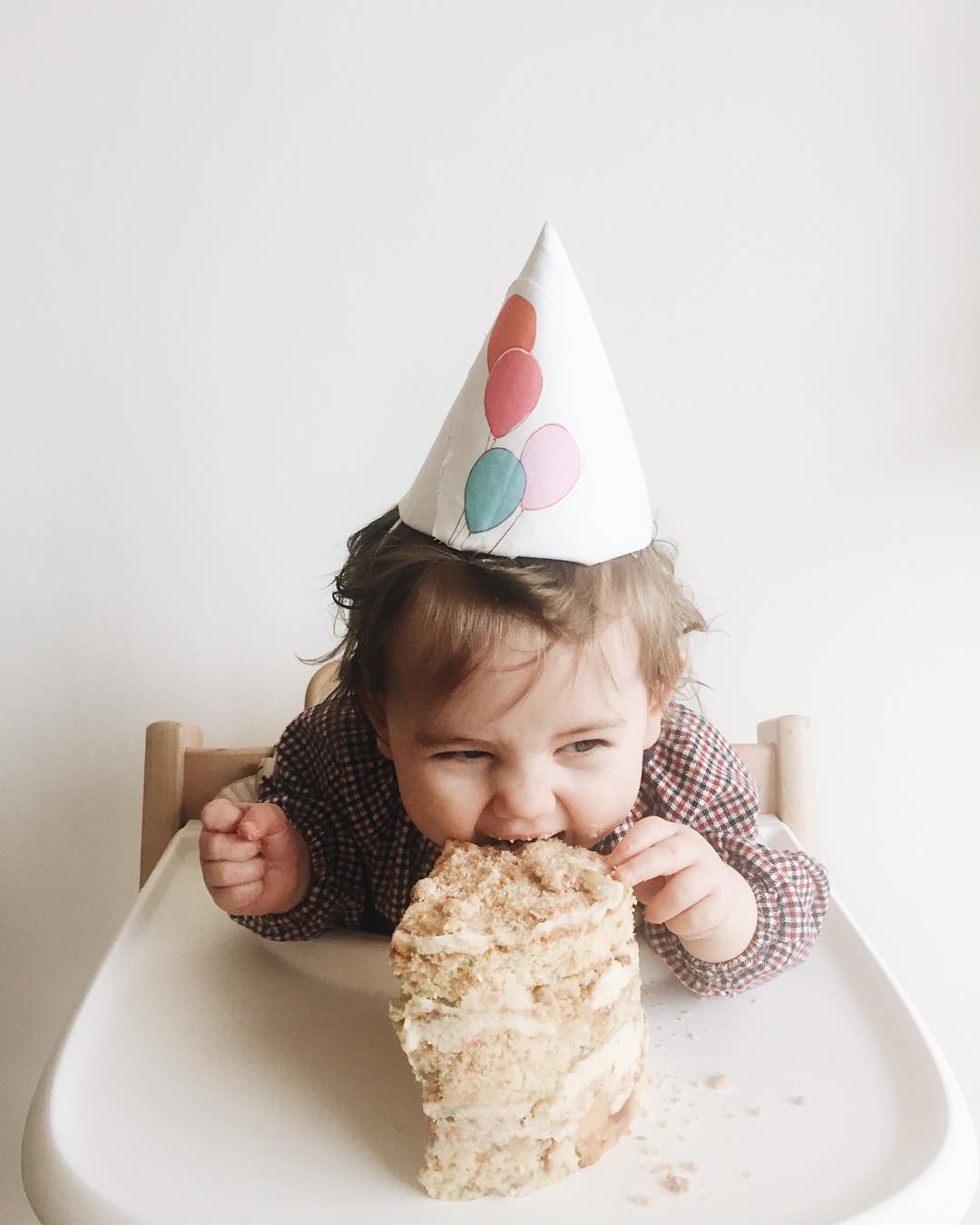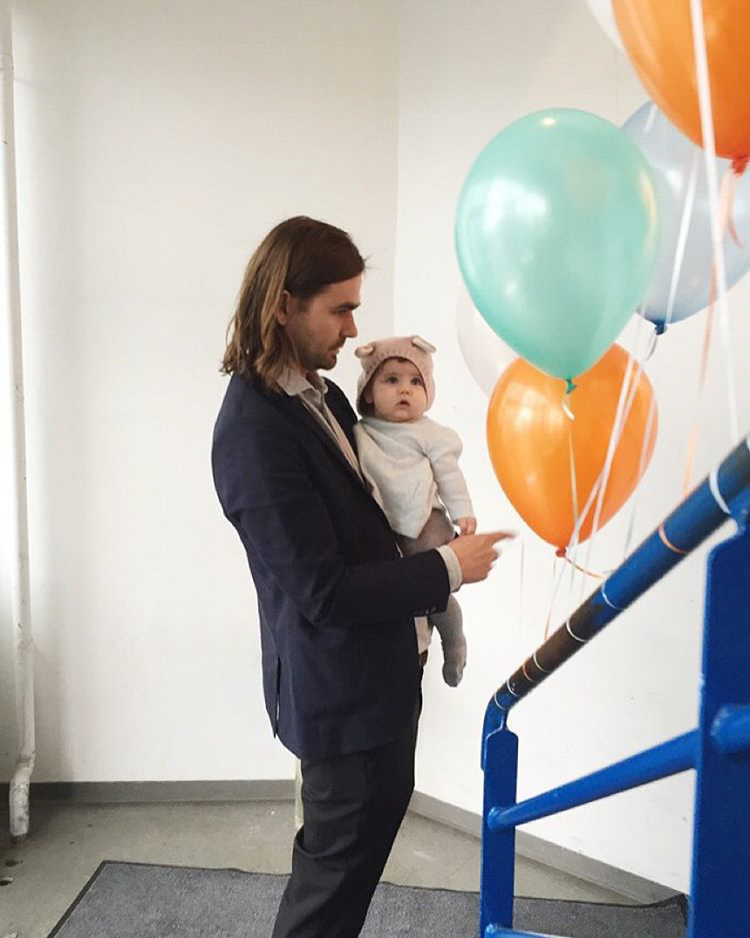Have you discovered the whimsical world of Danish birthday traditions? For most of us, the measure of a successful birthday is being in the presence of cake 80% of the day. In Denmark, birthday celebrations go beyond just mere confectionary; it’s A Whole Thing.
|
|
From whimsical traditions to heartfelt rituals, Danish birthday festivities are a unique amalgamation of culture, customs, and merriment. Whether it’s the iconic Danish flag adorning birthday tables and layer cakes, the resonating chorus of traditional birthday songs, or the lighthearted performance reviews based on the day’s weather, birthdays in Denmark are a vibrant reflection of the nation’s ethos and heritage.
Here’s our guide to getting another year older and a little bit wiser in the home of hygge:
 Danish Birthday flag: Fly the Dannebrog on your birthday
Danish Birthday flag: Fly the Dannebrog on your birthday
Not every country boasts such an unwavering love for their national flag as Denmark does. The Dannebrog symbolises celebration, so there’s never much persuasion required to whip it out. Birthdays are no exception! The Danish flag, or Dannebrog, is known as the “fødselsdagsflag” (the birthday flag) on your special day, where it comes in many shapes and sizes.
Most importantly is the miniature flagpole that decorates the birthday table and makes you feel like a big deal. You can also buy miniature confetti-style flags or flag-printed table attire if you want to go all-out. In their smallest form, they’re used to adorn cakes.
Interestingly, unlike some countries, using a ‘fødselsdagsflag’ doesn’t signify any political stance or strong nationalist sentiment. Instead, it’s a widespread tradition embraced by almost everyone for birthday celebrations.
And if it’s a Royal family member’s birthday, she/he gets flags on the local buses (because that’s what happens when you’re a VIP).
Read more |
 Sing Happy Birthday in Danish
Sing Happy Birthday in Danish
Denmark has its own unique set of sing-along birthday songs that add a special charm to the festivities.
One of the most recognized and traditional Danish birthday songs is “Idag er det Oles fødselsdag” or “Today is Ole’s Birthday.” The lyrics express joy and well-wishes for the individual, typically involving the anticipation of receiving gifts and enjoying delightful chocolate and cakes.
The song, often performed in chorus, holds a significant place in Danish culture. It has been cherished since 1913, creating a sense of festivity during birthday celebrations, from school children to adults at work or private parties.
Danish birthday song
hurra hurra hurra
Han sikkert sig en gave får,
om han har ønsket sig i år
og dejlig chokolade med kager til.
Og når han hjem fra skolen går,
hurra hurra hurra
Så skal han hjem og holde fest
og hvem der kommer med som gæst
får dejlig chokolade og kager til.
The child celebrating their birthday gets to choose the version of the birthday song, and there’s one known as “the one with the instruments.” When this version is chosen, all the guests are expected to imitate the musical instrument that the birthday child selects while singing the birthday song.
For instance, if the child picks “trumpet,” everyone must pretend to play a trumpet during the song. It’s a fun, light-hearted variation on the song, sometimes inspiring exaggerated performances from the guests.
“Hip hurra, det’ min fødselsdag” by Tommy Seebach is the other popular Danish birthday song, which was a hit in the 1980s, and has become a popular choice among young people. This particular song has evolving over time to be part of many young people’s birthday celebrations. In recent years, there a trend where the number of shots consumed during this song corresponds to the individual’s age, initially popularized during the 18th birthday.
|
|
Apart from these most popular songs, there exist other localized or regional variations of birthday songs in Denmark. These songs differ in lyrics or melodies, often varying based on family traditions or regional influences.
 BYO Birthday Layer cake (Lagkage)
BYO Birthday Layer cake (Lagkage)
Bring-your-own birthday cake is a practice that often divides opinion. It’s commonplace here to organise your own cake and for the practically-minded amongst us, it makes perfect sense!
In one fell sugary-swoop any awkwardness around what social protocol to follow (nobody wants those, “oh, it’s your birthday today? I didn’t realise…” conversations with co-workers) is totally diminished when you take on the task yourself.
The Danish layer cake, known as “lagkage,” is a classic choice that spells celebration in every layer, with its towering levels of light sponge coated with custard or cream, topped with cream and berries. If you want to impress, make sure it’s homemade!

|
|
How to assemble a Danish birthday layer cake?
![]() The base is a soft, fluffy sponge cake, gently stacked one upon the other. Between these layers, there’s a choice to be made – do you go for the fruity sweetness of berry jams like raspberry or strawberry, or do you opt for the comforting softness of creamy custard (kagecreme) or whipped cream? The choice between custard and cream often depends on personal preference and regional variations.
The base is a soft, fluffy sponge cake, gently stacked one upon the other. Between these layers, there’s a choice to be made – do you go for the fruity sweetness of berry jams like raspberry or strawberry, or do you opt for the comforting softness of creamy custard (kagecreme) or whipped cream? The choice between custard and cream often depends on personal preference and regional variations.
![]() Then it comes to dressing up, the top layer usually gets a special treatment – a spread of smooth icing that crowns the cake. But there’s also the simple method of a lightly dusting the top sponge with icing sugar, giving the cake a more elegant, understated look.
Then it comes to dressing up, the top layer usually gets a special treatment – a spread of smooth icing that crowns the cake. But there’s also the simple method of a lightly dusting the top sponge with icing sugar, giving the cake a more elegant, understated look.
![]() As for the sides, they’re often left au naturel, letting the layers take the spotlight. This cake is then lit with birthday candles, ready for the birthday song.
As for the sides, they’re often left au naturel, letting the layers take the spotlight. This cake is then lit with birthday candles, ready for the birthday song.
|
|
 |  |
Read more |
 Go for the Jugular: “Kagemand” or “Kagekone” Birthday Pastry Man
Go for the Jugular: “Kagemand” or “Kagekone” Birthday Pastry Man
Danish birthday traditions reflect a unique blend of customs, from flag-centric celebrations to… “whimsical” pastry rituals at children’s birthdays.
This is the most superbly macabre of all birthday traditions: the cutting of the cake man’s throat.
The cake man (or woman) is a little pastry person made from ‘brunsviger,’ a sugary, yeast-based cake, and decorated with what looks a lot like an average adult’s weekly sugar intake: marzipan icing strewn with sweets and finished with liquorice straws or laces for its hair strands.

This kind of cake is typical for a child’s birthday and less-so for adults, so don’t expect to see too many of them at grown-up dinner parties.
The great ceremony comes when all the candles are blown out in unison (any left lighted are said to represent how many boyfriends or girlfriends you have).
The cake must then be cut, with the first slice being the dear little person’s head sung in with a chorus of screams. It’s like the pastry-themed slasher movie we never knew we needed.
|
|
This special title holds sway only on the very day of their birthday. Interestingly, once that day passes, they’re just an ordinary child once more!
 You’re responsible for the weather on your birthday
You’re responsible for the weather on your birthday
According to Danish birthday tradition, it’s believed that the weather on your birthday serves as a reflection of your behavior and actions in the past year.
If it’s blue skies and blinding sunshine, you’ll have people slapping you on the back in thanks. But if you’ve been a bad human this year, expect grey drizzle and probably some smaller gifts. Why would you do that to us?!
This whimsical belief that’s entrenched in Danish folklore is often taken in good humor and jest. If the sun is shining, you might even hear: “Tak for det dejlige solskin, som du har sørget” (Thanks for the delightful sunshine you’ve brought!).
 |  |
 Saying happy birthday in Danish
Saying happy birthday in Danish
Back in the day, a “fødselsdagshilsen” (birthday greeting) was a physical card given to someone on their birthday.
Today, if you want to send a message someone for their birthday, simple write: “Tillykke med fødselsdagen! Jeg håber, du får en rigtig dejlig dag.” (Happy birthday. I hope you have a lovely day.)
Sometimes people simply write the phrase “Tillykke med dagen,” a phrase which translates to “Congratulations with the day” in English.
 “Round” birthdays
“Round” birthdays
In Denmark, they have what’s known as a ’round birthday’ or ‘en rund fødselsdag,’ referring to ages divisible by ten. These special birthdays are often marked with grand celebrations, gathering family and friends for a larger, more extravagent party. Even at work, it’s the norm to organize a modest gathering, usually thrown by the boss or the individual.
Danes also like to give a nod to the ‘half-round’ or ‘halvrunde’ birthdays, especially the 25th and 75th markers. The 18th birthday is hailed as a major event, celebrated with much pomp and circumstance. But funnily enough, the 21st birthday is typically less ceremonious often just resembling a regular birthday.
An old Danish custom involves delivering speeches and composing special song lyrics to the tune of traditional songs during there significant birthday bashes. This tradition, once widely adored, seems to be losing a bit of its former fervor in recent times, this sweet tradition is still alive and well in various corners of Danish society.
Gift-giving can vary widely. Common birthday presents in Denmark might include items like books, clothing, design objects, home decor, beauty products, and experiences such as concert tickets or restaurant vouchers. Some people might also appreciate receiving gifts related to their hobbies or interests.
Read more |
 Unconventional Danish Celebrations: Cinnamon Showers at 25 and Pepper Mill Tribute at 30
Unconventional Danish Celebrations: Cinnamon Showers at 25 and Pepper Mill Tribute at 30
|
|
The key to surviving the onslaught is to come well-equipped: we’re talking swimming goggles and waterproofs.
|
|
Historically, an unmarried man is humorously referred to as a “Pebersvend” (Pepper-journeyman or fellow), while an unmarried woman is called a “Pebermø” (Pepper-virgin). This tradition finds its roots in historical practices when traveling salesmen, particularly those selling spices like pepper, were forbidden to marry.
Fun fact: Notably, the renowned author H.C. Andersen penned a fairytale titled “Pebersvendens nathue” or “The old bachelor’s nightcap,” delving into the life of such a salesman.
Interested in other Danish traditions? Learn more about Danish Christmas, Easter and Fastelavn.
Photo credit: Miriam Bak McKenna. Follow her inspiring Instagram here.

